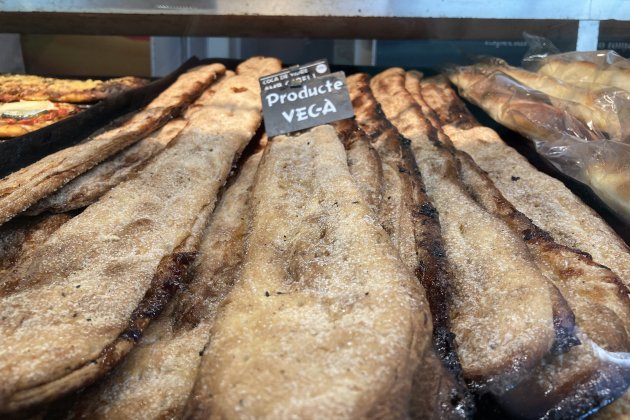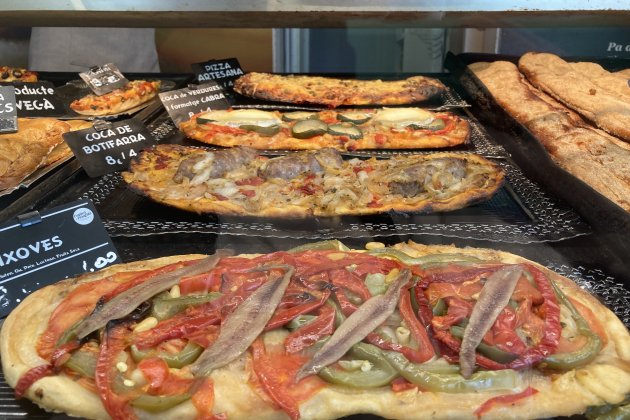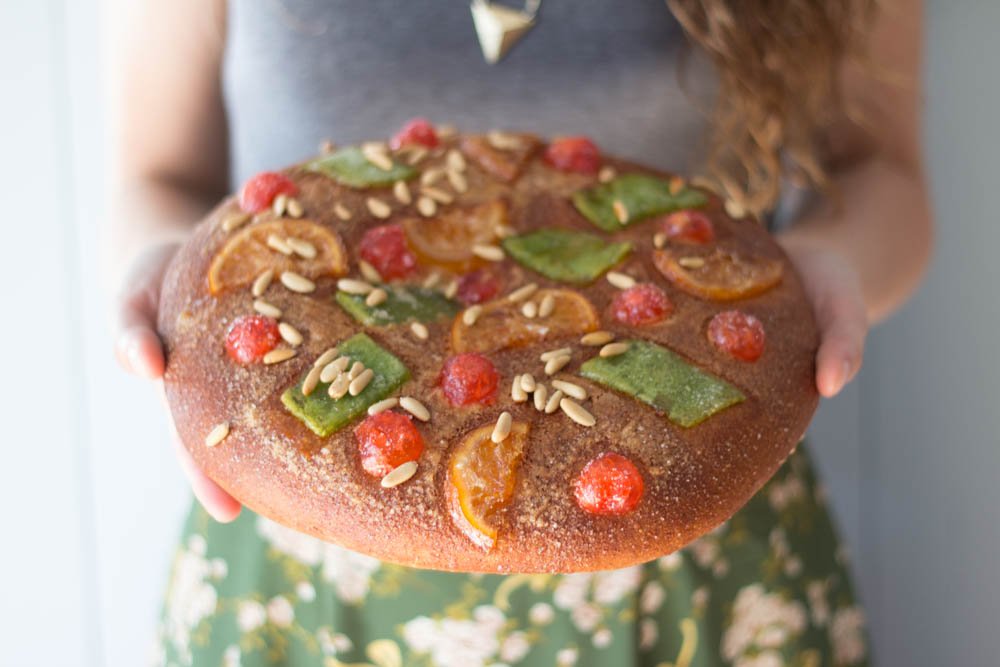On the night of June 23rd, Catalonia celebrates la revetlla de Sant Joan, Saint John’s Eve. And as Catalonia’s main midsummer festival, it tends to go big. When walking around Barcelona and other Catalan towns and cities, you may see a particular sort of pastry in the windows of bakeries; big, rounded flatbreads, either open or folded shut, and covered with a wide range of toppings, sweet or savoury. These flatbreads are a staple of Catalan cuisine. Originating as a way to make sure unused bread and extra ingredients didn’t go to waste, there are now dozens of different sorts of coca (plural: coques) with their own names and associations, some more common in certain regions, some only eaten on specific days, which is the case of coca de Sant Joan.
🍽️ 6 best tapas in Barcelona to try for an authentic Catalan experience (with recommendations from locals)
🍸 A guide to vermut in Barcelona: all about Catalonia's traditional brunch
'Coca de Sant Joan' and its variations
Varieties of coques include the coca de vidre, which is baked with excess sugar and sprinkled with anise so that when eaten, it breaks apart like glass. Or the coca de llanda - literally, "can" coca - which is associated with the Valencia region and which is baked in a metal cake pan and often made with oranges. In particular, coques have a strong relationship with holidays and festival days in Catalonia. And, yes, one of the most popular is the coca de Sant Joan, which is eaten on St John’s Eve, either with family or at a celebration.

The coca de Sant Joan is typically a sweet coca topped with candied fruit and pine nuts, though there are many varieties between regions and between individual bakers. Some of these midsummer coques are criss-crossed with cream or coated with marzipan on top, or are filled with custard. But not all coques de Sant Joan are even sweet! In Alicante, there is a coca with the same name eaten on the same night that is instead savoury, made with vegetables and tuna.

🥬 What are calçots? The tradition and importance of the calçotada in Catalonia
The tradition of eating 'Coca de Sant Joan'
Although St John’s Eve and Day are Christian holidays, marking the birth of St John the Baptist, many sources say the celebration’s origins in Catalonia likely date back to a pre-Christian celebration of the summer equinox, which falls just two days before. The tradition of eating the coca de Sant Joan is derived from another type of traditional cake, the tortell amb ous, the round shape of which some say is reminiscent of ancient sun worship traditions.

The coca is usually accompanied with cava, the traditional Catalan sparkling wine, or other wines. There are many other Catalonian traditions surrounding la revetlla de Sant Joan. Most of the festivities take place around bonfires, which are started when the sun goes down on June 23rd and kept burning well into the night, often lasting into the early morning. Fireworks and pyrotechnics shows are also traditional, filling the night with light and sound. Gunpowder has been used in Sant Joan celebrations since the twelfth century. A Catalan proverb, “Qui encén foc per Sant Joan no es crema en tot l'any”, translates as, “Whoever lights a fire for St John will not burn up for the whole year.”

